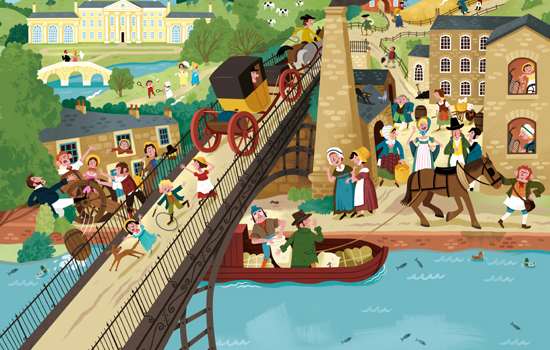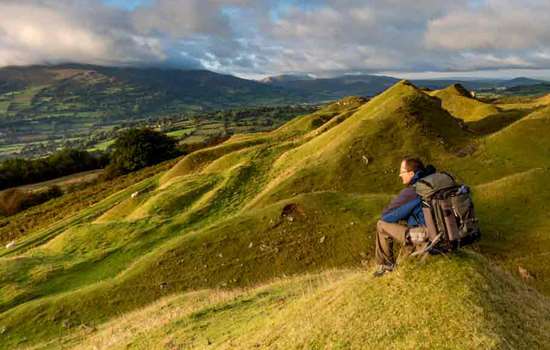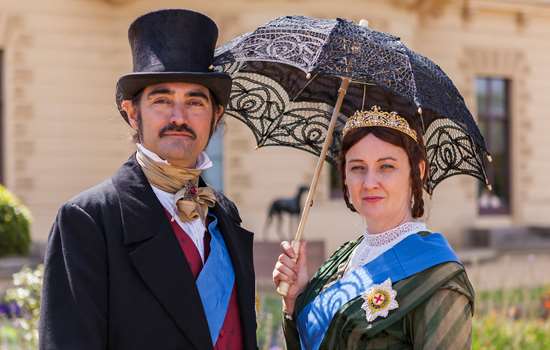RESTORING A HISTORIC CONNECTION
‘Tintagel is one of the most spectacular, historic sites in Britain, and continues to fire the imagination of visitors from around the world,’ says Nichola Tasker, head of national projects, in this exclusive video on the creation of Tintagel Castle’s forthcoming bridge. Watch the video to find out more about our project to restore a connection in the landscape that had existed throughout history. Learn about the Cornish slate formed 250 million years ago that is being used in the bridge, and discover the feat of engineering involved in the steel fabrication process and how the bridge will be transported down the windy roads to Tintagel.
TINTAGEL’S THRIVING COMMUNITY
Nearly a century after Rome withdrew its militia, life for most people in Britain had changed substantially. Without the empire’s protection of trade routes, much of Britain’s foreign trade collapsed. The villa estates declined and the cities became largely deserted. But around 500AD Tintagel was home to a thriving community of hundreds of people, and ships arrived on a regular basis with cargoes from France, Spain and the Mediterranean.
Excavations in 2017 uncovered animal bone, which shows people were eating mainly beef and pork. The types of bone suggest they were bringing live animals in from local farms and slaughtering them here. Archaeologists also found seeds, preserved as charcoal, including barley, oats, rye and bread wheat. It is likely the barley was being malted and made into beer.
A spectacular discovery in 2017 was a large stone slab, inscribed in Latin with the names ‘Tito’, ‘Tud’ and ‘Budic’, along with Christian monograms. The ‘d’ of Tud is the Greek letter delta – another indication of Tintagel’s links with the Mediterranean world. Whoever inscribed the text was an expert in writing Christian manuscripts.
Crucibles and moulds were also found in the recent excavations, so there must have been artisans working here too, making tools and perhaps jewellery.
Tintagel was an amazing place 1,400 years ago – it was bigger than London at the time. But how do we describe it? A royal centre for the kings of Cornwall? A trading centre? A Christian centre? Perhaps it was all of these.
LIFE IN EARL RICHARD'S CASTLE IN TINTAGEL
Over 800 years later, around 1340, Tintagel Castle – newly built on a site imbued with Arthurian legend – is home to a community of Earl Richard’s staff. The earl rarely visits (he is one of the wealthiest men in Europe and has castles across England) so, when he does, it’s a special occasion.
He will have important guests that need to be entertained. Sumptuous dishes will be prepared, musicians and storytellers will be brought in, and the staff will wash and iron their best clothes. Richard and his retinue will ride through the main gate and into the outer ward of the castle, where they will dismount and be welcomed by all the staff. From here, they will walk across a narrow stretch of land to the great hall in the inner ward.
The castle is governed by a constable, who lives opposite the great hall. He not only manages the castle staff, but also the earl’s wider estate in north Cornwall.
The narrow stretch of land linking the inner and outer wards of Richard’s castle was eroded by the destructive power of the sea. We are building a new bridge to reunite the two wards, so that visitors to the castle can once again follow the old route through the main gate to the great hall.
This image to the right shows how the castle would have looked in Earl Richard's time.
You might also be interested in
-

Read Kids Rule!
Explore our pages dedicated to kids content with videos, recipes, competitions and more.
-

go on a pilgrimage
Feed mind, body and soul and discover the story of England at our historic sites on one of our pilgrimage trails.
-

Go outside The Victorian Way
Discover how the Victorians enjoyed the outdoors and learn more about Victoria and Albert's life together.
